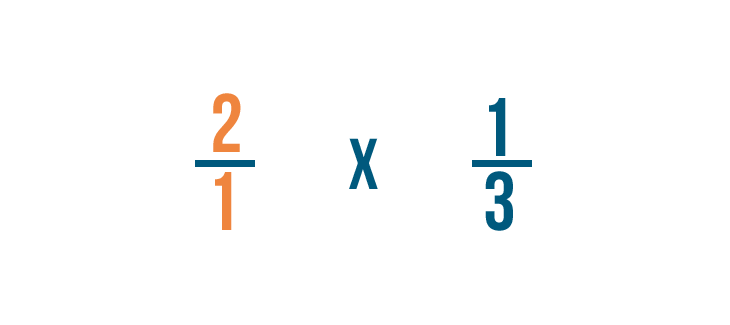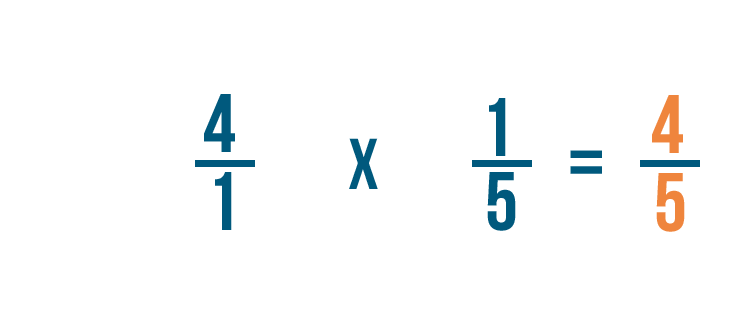Solving multiplication problems with fractions
Now that we know how to set up multiplication problems with fractions, let's practice solving a few. If you feel comfortable multiplying whole numbers, you're ready to multiply fractions.
Click through slideshow to learn how to multiply two fractions.

Let's multiply to find 1/2 of 7/10.

Just like we did earlier, we'll replace the word of with a multiplication sign. Now we're ready to multiply.

First, we'll multiply the numerators: 1 and 7.

1 times 7 equals 7, so we'll write 7 to the right of the numerators.

When we added fractions, the denominators stayed the same. But when we multiply, the denominators get multiplied too.

2 times 10 equals 20, so we'll write 20 to the right of the denominators.

Now we know 1/2 times 7/10 equals 7/20.

We could also say 1/2 of 7/10 is 7/20.

Let's try another example: 3/5 times 2/3.

First, we'll multiply our numerators. 3 times 2 equals 6.

Next, we'll multiply our denominators. 5 times 3 equals 15.

So 3/5 times 2/3 equals 6/15.

Now you try it! Try solving the multiplication problems below. Don't worry about reducing the answer for now.
Multiplying a fraction and a whole number
Multiplying a fraction and a whole number is similar to multiplying two fractions. There's just one extra step: Before you can multiply, you'll need to turn the whole number into a fraction. This slideshow will show you how to do it.
Click through the slideshow to learn how to multiply a fraction and a whole number.

Let's multiply 2 times 1/3. Remember, this is just another way of asking, "What's 1/3 of 2?"

Before we start, we need to make sure these numbers are ready to be multiplied.

We can't multiply a whole number and a fraction, so we're going to have to write 2 as a fraction.

As you learned in Introduction to Fractions, we can also write 2 as 2/1.That's because 2 can be divided by 1 twice.

Now we're ready to multiply!

First, we'll multiply the numerators: 2 and 1.

2 times 1 equals 2. We'll line the 2 up with the numerators.

Next, we'll multiply the denominators: 1 and 3.

1 times 3 equals 3. We'll line the 3 up with the denominators.

So 2/1 times 1/3 equals 2/3. We could also say 1/3 of 2 is 2/3.

Let's try another example: 4 times 1/5.

We'll have to write 4 as a fraction before we start.

We'll rewrite 4 as 4/1. Now we're ready to multiply.

First, we'll multiply the numerators: 4 and 1.

4 times 1 equals 4, so the numerator of our answer is 4.

Next, we'll multiply the denominators: 1 and 5.

1 times 5 equals 5, so 5 is the denominator of our answer.

So 4/1 times 1/5 equals 4/5.

Now you try it! Try solving the multiplication problems below. Don't worry about reducing the answer for now.



































